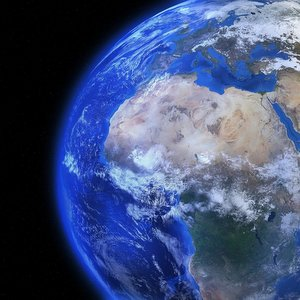The list of the most dangerous space debris objects in the near-Earth orbit was presented by the international research team with involvement of Professor Vladimir Aslanov from Samara National Research University (Samara University). The authors of the paper published believe that elimination of the "junk" objects studied by them is a priority task in space exploration, which can be implemented in the coming years. The results of the research project have been published in Acta Astronautica Journal.
To date, spent elements of space engineering are either incinerated in the atmosphere or taken to safe burial orbits. However, according to the researchers, in convenient orbits, there are still about 25 thousand previously launched large objects, and millions of small particles moving at the speed of up to 15 km per second. Collisions of such objects with each other and with functioning satellites result in avalanche-like debris problem escalation.
In the experts’ opinion, the excess of space debris is becoming a new global challenge that threatens operation of the Internet, as well as navigation, climate, geographical and other satellite systems. In the new research project, nineteen experts from Russia, the United States of America, China, Japan, Germany, Italy, and France joined forces to find a solution to the problem.
"In our research, we combined eleven different methods of dangerous "junk" space objects assessment, and identified four main factors: mass, frequency of encounters, on-orbit lifetime, and proximity to functioning satellites. Now the world community has a reliable list of 50 objects, elimination of which should be a priority", said Vladimir Aslanov, one of the paper’s authors, Head of Department of Theoretical Mechanics at Samara University.
The scientists have found that 37 of 50 most dangerous objects have a mass of more than two tons, and about 80% of such debris is rocket hulls in low near-Earth orbits. In the researchers’ opinion, to eliminate the risk of collision, the major portion of these objects must be dragged away to safe orbits by space tugs, as an option.
As the authors of the research project point out, technologies for cleaning up space debris have been developing rapidly, space experiments are actively conducted. Applying advanced technologies, the scientists believe, it is possible and necessary to take the first steps to clear the orbit.
"Governments of the leading space countries should make decisions on joint actions in planetary scale. We are sure, the start of the space cleanup age is equal to the start of the space exploration age. Without this global step, the humanity’s future in space is doubtful", emphasized Vladimir Aslanov.
The research team, in which Russia is represented by
Andrey Baranov, Leading Researcher, M.V. Keldysh Applied Mathematics Institute,
Dmitry Grishko, Associate Professor of Department of Theoretical Mechanics, Bauman MGTU, and
Vladimir Aslanov, Head of Department of Theoretical Mechanics, Samara University, plan to continue developing the database of dangerous objects in the Earth orbit, considering the best options for their elimination, including dragging the debris away into the safe trajectory, as well as eliminating it in the orbit where it is now.
